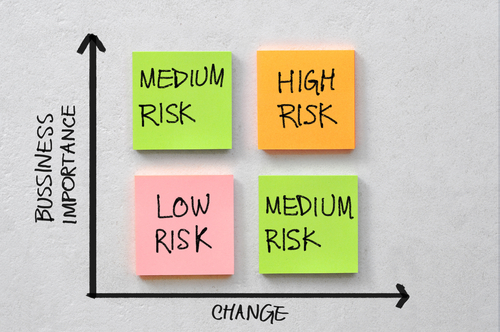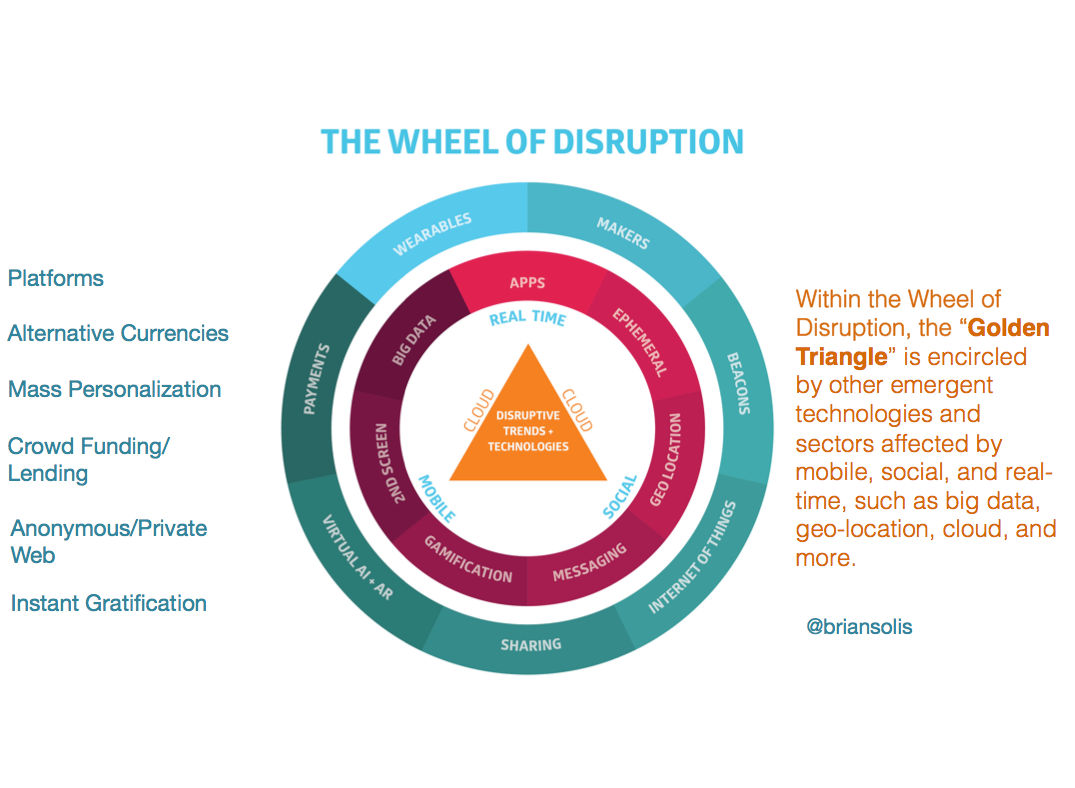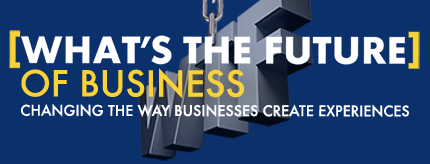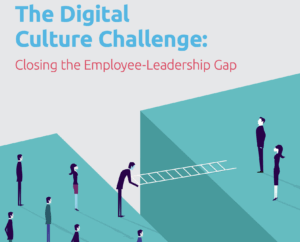Every day, there’s seemingly yet another disruptive trend that emerges out of nowhere which affects consumer behavior and the future of everything along with it. Many of you already follow some of the most notable trends disrupting markets today and I know you’re devising new strategies as a result in order to compete in these ever shifting markets.
– Real Time
– Social Media- Mobile
– Sharing Economy
– Peer-to-Peer Economy
– Maker Economy
– Internet of Things
– Crowd Funding/Lending
This wheel of disruption keeps turning and the Butterfly Effect it unleashes with each revolution is forcing the creation of new agile models to stay current let alone get ahead.
Aside from the caché that each of these white hot trends boast, they roll up into one of the most important business movements in modern history. Enter the era of Digital Transformation.
Digital transformation has been a key area of research for me over the past few years. In fact, Altimeter Group recently formed a strategic alliance with CapGemini, one of the leading authorities on the subject, to lead joint research endeavors that help guide businesses throughout their transformation efforts.
Following the CapGemini announcement, Gloria Lombardi of Simply Communicate, reached out to learn more about the alliance and also what organizations are doing to adapt to the 21st Century. I wanted to share our discussion with you here.
Gloria Lombardi: Digital Transformation. What does it involve? And, which companies are doing well?
In our report “Why and How Companies are Investing in New Business Models to Lead Digital Customer Experiences” we analyzed some of the best companies doing well in this space. These include Starbucks, Intuit, Sephora, Lego, General Motors, and Ford.
Each of them is going through digital transformation in their own way. But, the stories we heard were phenomenal across the board. I will save the concrete examples for the report since it is free to download. However, here I’ll share some highlights.
Everyone begins at the same place. It starts with asking a simple question, “How is my digital customer and employee different from those who are traditional?”
From there, you learn about journeys, expectations, behaviours, and preferences. You start to see that the investments you make today are indeed showing signs of decay or irrelevance.
However, seeking these answers, is how we begin to learn the “why” and “how” of digital transformation.
For example, Starbucks‘ CDO Adam Brotman started with digital customers and mobile platforms. “I started with mobile; that was the heart of it where we really acted as a team,” he told me. “That worked well and catalyzed, moving into web where we were charged with figuring out what our mobile web strategy looked like and how it connected to our loyalty and payment groups. From there, it snowballed pretty quickly.”
Digital transformation is also about building relationships and alliances inside the company to expedite and scale change. Digital leaders must open the door for passionate employees throughout the company who have the energy, passion, and experience to champion change. As LEGO’s Lars Silberbauer, Global Director of Social Media and Search, shared with me, “It’s about finding those people in different departments who are willing to risk things to be a lead within the company. There are a lot of people who want to take a company forward.”
Once you have support, digital transformation will lead to new vision and operating philosophies as well as models and processes.
Another example is Motorola Solutions. The partnership between IT and marketing was elevated to an entirely new level. Dubbed the “MIT Group,” Marketing and IT formed an official alliance to focus on an integrated approach to digital customer experience and change.
Based on these studies, what are the challenges to digital transformation?
Too many companies are approaching their digital transformation from a technology perspective.
But at the heart, digital transformation is the story of how people are changing.
Whether we realize it or not, the way customers and employees make decisions, the technology they use, and how preferences and expectations evolve or detour, are stories for us to discover. These are the insights that guide the transformation. Technology adoption is not the solution: it is merely an enabler for transformation.
It takes vision to make the change. I will share with you an example from our second report on digital transformation.
“The State of Digital Transformation” revealed the organizations supposedly undergoing digital transformation. (After studying the best companies out there, we wanted to compare them with everyone else).
88% of these enterprises stated they were going through digital transformation efforts. However, within the last year, only 25% of them completely mapped out the customer journey to get a clear understanding of new digital touch-points.
With these findings at hand, what’s your view for the future of digital transformation?
Digital transformation means different things to different people. That’s OK. The future is going to either happen to businesses or because of the changes they undertake today.
Change has to start somewhere. Strategists will realize that their digital customers and employees are not only different from their traditional counterparts, but also different from the executives who think they know them.
The future is really about empathy. Without empathy, there can be no real change. Without it, businesses will succumb to something that I call ‘Digital Darwinism’, when technology and society evolve beyond the ability to adapt and thrive.
A shared vision around digital transformation…Can you tell us more?
Altimeter and Capgemini’s work is not only complementary; clients and prospects already substantiate it.
Capgemini takes a holistic view of digital transformation across the entire enterprise – from manufacturing to marketing, service, support and everything in between.
Initially, Altimeter Group focused on the digital customer experience and employee engagement. Our view was inspired by the work we were already doing around social media, content strategy and mobile. We learned that significant budget and resource investments are led by sales and marketing to update aging infrastructures and to pursue the digital customer more effectively.
Our initial research was designed to help marketers and IT professionals think beyond technology. We wanted to encourage them to invest in strategy, system and process roadmaps, which are relevant for discerning, sophisticated, (and impatient) customers and employees.
Innovation. Is there anything we can anticipate Brian?
Innovation doesn’t always correlate to technology. Most of the time, it starts with perspective: seeing things differently. It is something that touches processes, models, and corporate vision.
This is a key area of focus. We look forward to sharing more in the coming months.
Connect with me…
Twitter | LinkedIn | Facebook | Google+ |Youtube | Instagram | Pinterest
Image Credit: Shutterstock








Great article, Brian.
Thank you Mickie!
Bookmarked to read, comment, and share!
Terrific insight, Brian! 😀
Cheers!
Cheers Brian!
Excellent post Brian! I certainly appreciate the part about companies approaching their transformation activities from the technology point of view. This is a legacy issue that has led to many unsuccessful technology projects for years.
Understanding how services will be consumed, and what the client/customer really wants is the starting point, not the data centre. Work outside-in, not inside-out.
Exactly!
“Innovation doesn’t always correlate to technology. Most of the time, it starts with perspective: seeing things differently. It is something that touches processes, models, and corporate vision.” That just stood out to me so much. I feel like most times companies focus on using new technologies but either don’t know how to use it or don’t need to. Sometimes the lack of technology isn’t what is wrong but the lack of new ideas.
Thanks for the post!
-Josue (Josh) Carpio
love the comment josh…
Thank you for an excellent article. I especially enjoyed your focus on difference in our individual approaches to digital, rather than spotting patterns in how we consume it. Difference, and thus empathy, are enriching and indeed disruptive!
You are welcome. Thank you.